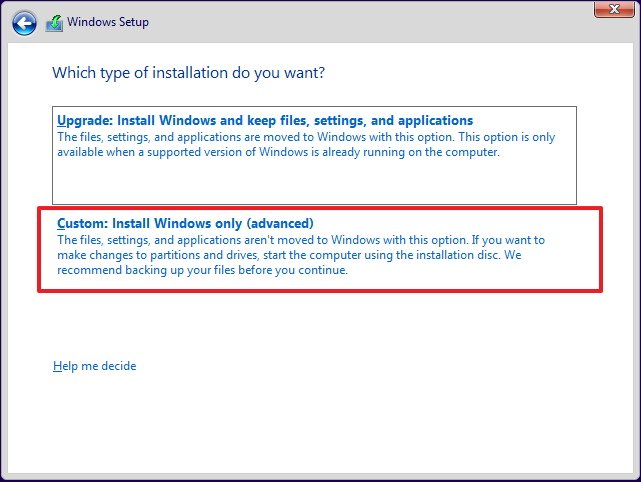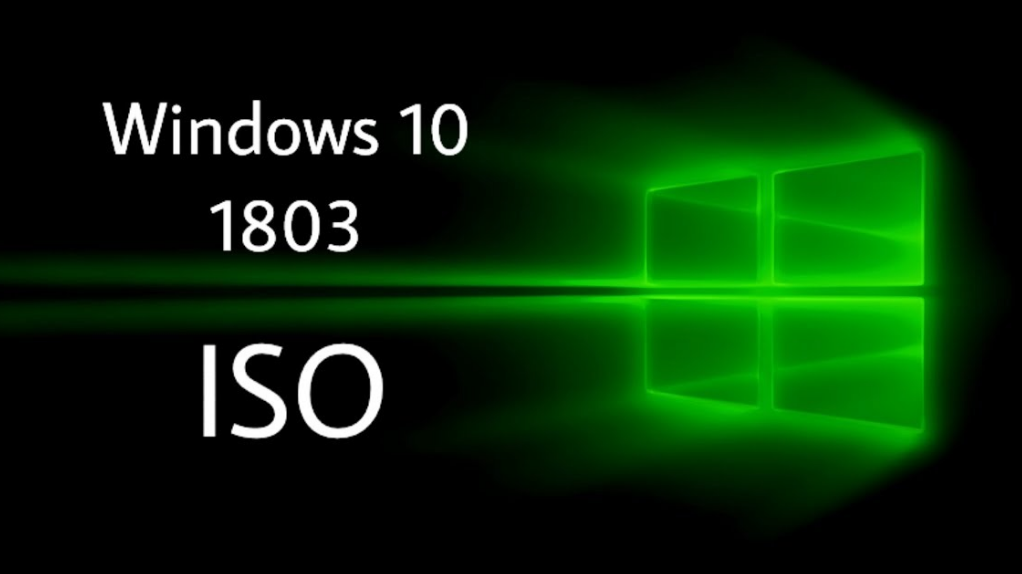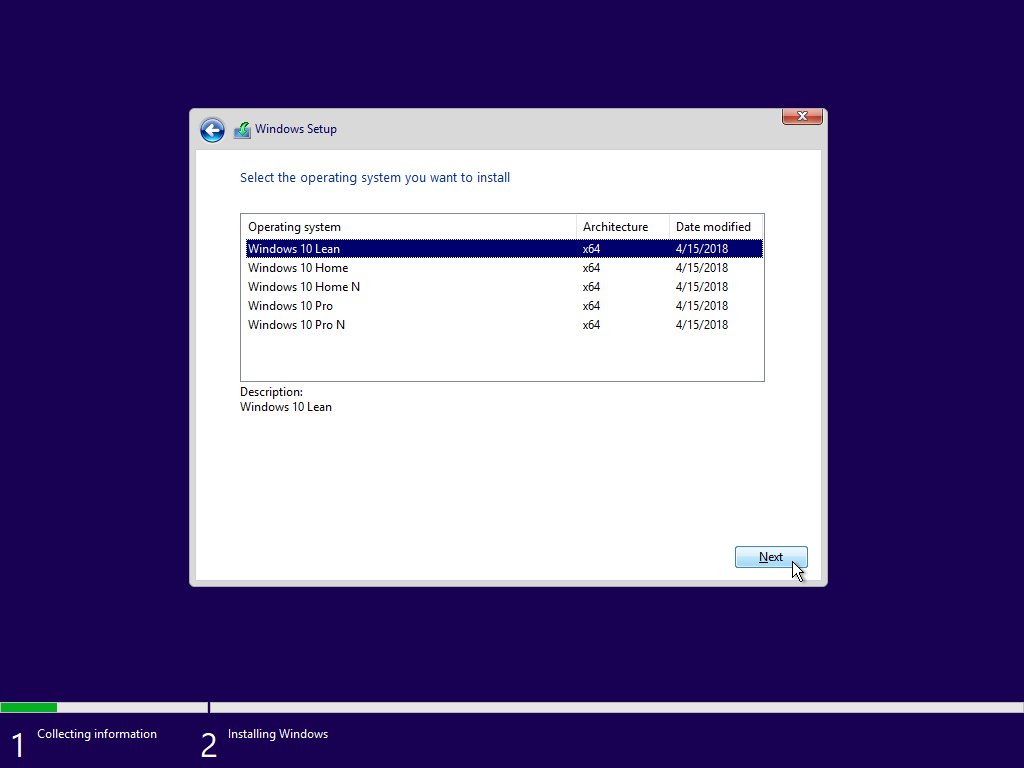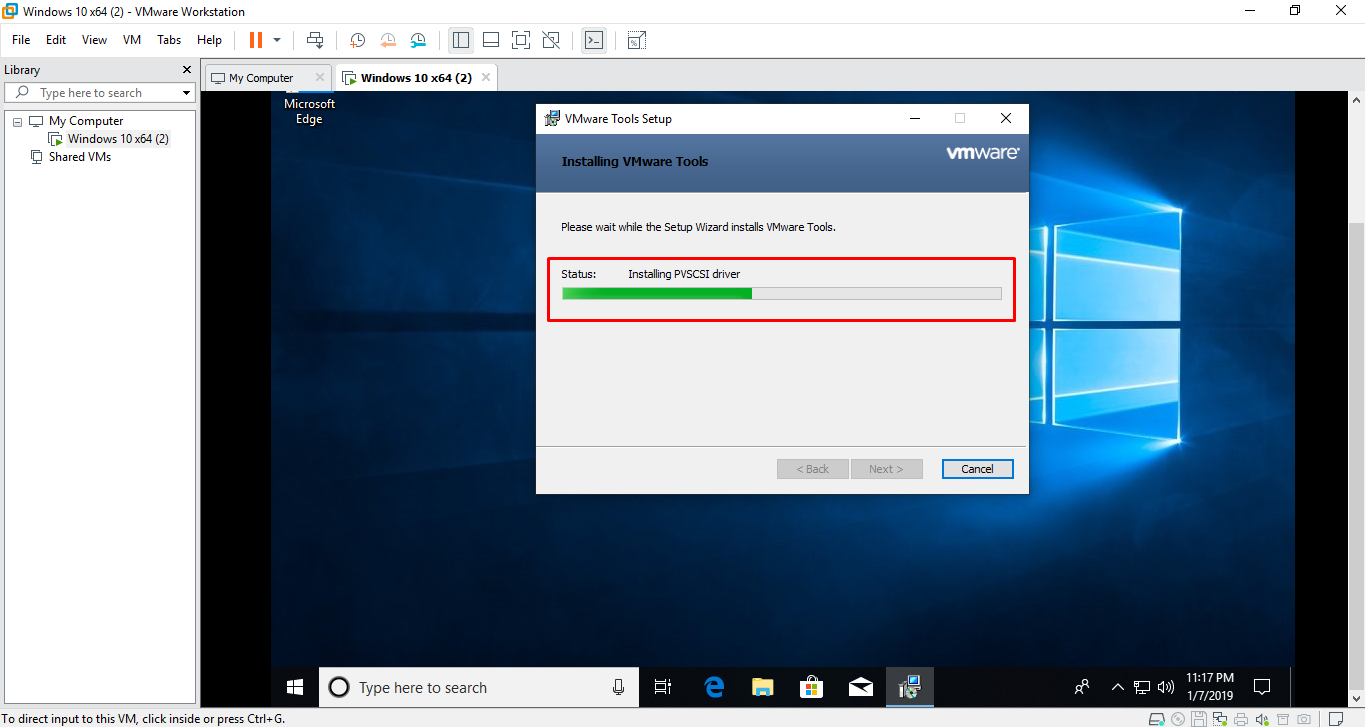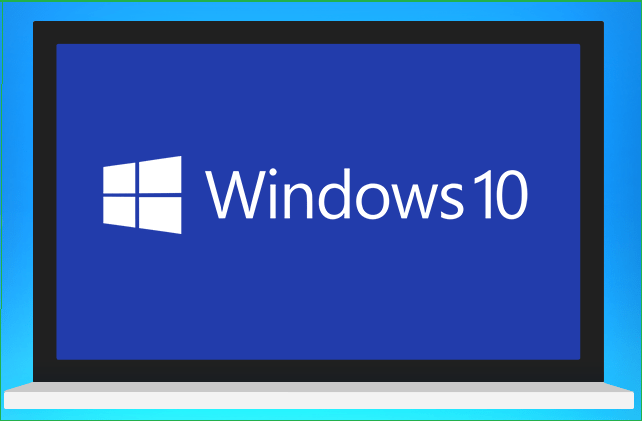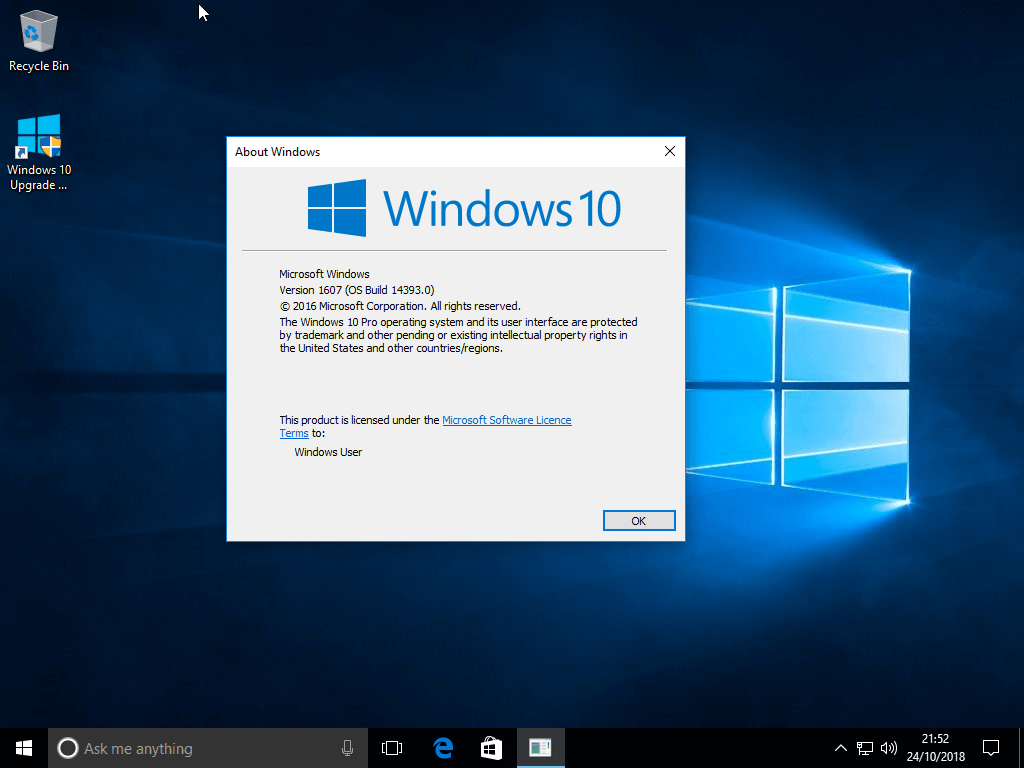I have tested this scenario multiple times on hardware that originally shipped with Windows Home and was upgraded to Windows 10 Pro. After the upgrade was complete, I used a bootable USB flash drive containing Windows 10 setup files to reinstall a clean copy of Windows 10 Pro, skipping the option to enter a product key as part of setup, as shown below. When prompted, be sure to choose Windows 10 Pro as the edition to install. 10 product keys, meaning they could be entered during installation to activate the free license, without the need to upgrade first to "activate" the hardware with Microsoft's activation servers. The upgrade offer was marketed and initiated using the "Get Windows 10" application, which was first downloaded and installed via Windows Update in March 2015. Third-party programs were also created to assist users in applying measures to disable GWX.
The installation process of Windows 10 has two main parts, including the setup and out-of-box experience . In the setup process, that's where you will select some of the basic settings, and you'll find the options to erase the hard drive, configure the partitions, and clean install Windows 10. The out-of-box experience happens after the setup is complete, and it's the stage where you'll configure your settings, such as region, network, account, privacy, and other settings.
Microsoft stated that these devices would no longer receive feature updates, but would still receive security updates through January 2023. Microsoft will continue to support at least one standard Windows 10 release until October 14, 2025. After you complete the steps, repeat the instructions to backup the remaining accounts . In addition to making a copy of your files, it's also a good idea to create a list of the installed programs with their respective product keys to know the apps you may need to reinstall after the installation.
Other critics argued that Microsoft should not have triggered any downloading of Windows 10 installation files without user consent. As of the May 2019 update, the minimum disk space requirement has been increased to 32 GB. In addition, on new installations, Windows permanently reserves up to 7 GB of disk space in order to ensure proper installation of future feature updates. The OS restricts software installation to applications obtained from Microsoft Store; the device may be upgraded to Windows 10 Pro for a fee to enable unrestricted software installation. As a time-limited promotion, Microsoft stated that this upgrade would be free on the Surface Laptop until March 31, 2018.
Windows 10 S also contains a faster initial setup and login process, and allows devices to be provisioned using a USB drive with the Windows Intune for Education platform. Go to the downloads folder where your ISO has been downloaded. Right-click on the ISO and then mount that ISO. Inside there you will find setup file and click on the step-up file and click yes to the new user account control and let that open up. After opening the ISO file, it'll offer you to check "Download and install updates". But you don't need to do that right now that's why check the option "Not right now" and then click Next.
You should get the Windows 10 Home on there and click accept. Now you will see the confirmation that Windows 10 Home is ready to install and it is also going to allow you to keep your files and apps. Now click on install, and it'll take a bit of time. After your flash drive or DVD is set up, use it to boot up the PC or partition on which you want to install Windows 10. If you're using a virtual machine, make sure the ISO file is accessible. Go through the initial Windows 10 setup screen by confirming the language and settings.
Click Next, then click Install Now and accept the license terms to continue. If you already have a backup of the device and files. The computer is configured to start from a USB flash drive, and non-essential peripherals are disconnected. Then you can skip this part and jump to bootable media creation and a clean install process. In March 2016, some users also alleged that their Windows 7 and 8.1 devices had automatically begun upgrading to Windows 10 without their consent. In June 2016, the GWX dialog's behavior changed to make closing the window imply a consent to a scheduled upgrade.
How To Install Windows 10 Home Over Pro It was concluded that these users may have unknowingly clicked the "Accept" prompt without full knowledge that this would begin the upgrade. Many would argue that downloading Windows without paying for or already owning a product key is ethically wrong. That said, Microsoft has made this process easier over various Windows iterations and lessened the limitations and nagging that happens when you don't activate.
The company isn't trying to close this loophole, probably because it's more interested in driving user numbers. I've even seen well-known vendors and Microsoft partners do press presentations with watermarks on their desktop. Getting hold of the Windows installer is as easy as visiting support.microsoft.com. Whether you've paid for Windows 10 already or not, anyone is allowed to download a Windows 10 ISO file and burn it to a DVD or create installation media on a USB drive for free. Once that's done, you can boot from your installation media and load Windows 10 onto your PC. During installation, Microsoft asks for an activation key.
You can skip it, but eventually, Windows will start alerting you that your install isn't activated. On systems that came preinstalled with Windows 8, Microsoft introduced a new mechanism for product activation. Instead of using the old OEM SLP key method, which allowed major brands such as Dell, HP, and Lenovo to install Windows in bulk, a unique product key is embedded in the computer's firmware. This also removed the need for the Certificate of Authenticity stickers you would see attached to a PC running Windows 7 or earlier versions.
Microsoft describes the behavior as design, but it's an extra bit of chore and confusion when the setup is complete. Here is how you can work around the issue. Every windows version has a matchless key to activate. Now think that you activated Windows 10 Home with the premium activation key. Now the sudden update of windows brings you on the edge of another activation key. Do you have any motive to buy the expensive another activation key?
That's why you have backtracked on your windows previous versions. Either you can reboot the PC with your previous windows version, or you can downgrade to previous windows. Here you'll learn how can you change from windows 10 pro to home.
If you don't have a product key or you're installing Windows 10 on a new hard drive, make sure you've linked your Windows 10 digital license to your Microsoft account before you start the installation. First make sure you have a full backup of your data since will be installing on top of the existing data. You can download the Windows 10 media from the Windows 10 .iso download site and then set the computer to boot from the flash drive. Typically, I find this is often the hardest part of the process — finding the combination of keys that allows you into the bios to force the system to boot from the flash drive.
On Windows 10, a clean installation defines the process to wipe out the hard drive and start from scratch with a new setup when the device is having problems. For instance, this method can resolve memory, startup, shut down, apps, and performance issues. In addition, a fresh install can improve battery life, and it's perhaps the best approach to eliminating viruses and other types of malware. Feature updates prior to version 1909 are distributed solely as an in-place upgrade installation, requiring the download of a complete operating system package (approximately 3.5 GB in size for 64-bit systems). Unlike previous builds, version 1909 is designed primarily as an update rollup version of 1903, focusing primarily on minor feature additions and enhancements.
The full upgrade process is still used for those using builds prior to 1903. This edition is designed for "special-purpose devices" that perform a fixed function . For this reason, it excludes Cortana, Microsoft Store, and all bundled Universal Windows Platform apps . 10 Home and Pro is "Semi-Annual Channel " (formerly "Current Branch", or "CB"), which receives stable builds after they are publicly released by Microsoft.
Each build of Windows 10 is supported for 18 months after its original release. A new iteration of the Start menu is used on the Windows 10 desktop, with a list of places and other options on the left side, and tiles representing applications on the right. The menu can be resized, and expanded into a full-screen display, which is the default option in Tablet mode.
A new virtual desktop system was added by a feature known as Task View, which displays all open windows and allows users to switch between them, or switch between multiple workspaces. Universal apps, which previously could be used only in full screen mode, can now be used in self-contained windows similarly to other programs. Program windows can now be snapped to quadrants of the screen by dragging them to the corner. When a window is snapped to one side of the screen, Task View appears and the user is prompted to choose a second window to fill the unused side of the screen (called "Snap Assist").
The Windows system icons were also changed. The new Start menu takes after Windows 7's design by using only a portion of the screen and including a Windows 7-style application listing in the first column. The second column displays Windows 8-style app tiles. Myerson said that these changes would occur in a future update, but did not elaborate. Windows Phone 8.1 would share nearly 90% of the common Windows Runtime APIs with Windows 8.1 on PCs. Windows 10 received generally positive reviews upon its original release.
After you've successfully performed a Home-to-Pro upgrade, you can file that product key away. Your upgrade is now a digital license, attached to your unique hardware. If you perform a reinstallation of Windows, Microsoft's activation servers will recognize the hardware and activate Windows 10 automatically. Now the application will open up, and you have to wait for this to open and then accept the applicable notices and license terms. Now let the application go to the next stage and after coming to the page, check on the "Create installation media" and go next. Again, check the "Use the recommended options for this PC"and go next.
The next page will permit you to check two options. It is going to download that's why you just need to put this into the download area and click "save". Thus, the windows 10 ISO will start to download. The downside of this tool is that it leaves your computer and hard drives in their current state. AfterWindows 10 is completely installed, you'll be presented with the new desktop and all the new features. At this time, it's a good idea to go to Windows Update using the Settings app to check for updates.
Also, go to Device Manager to confirm if the computer hardware is working correctly, and you don't need to reinstall any driver. Alternatively, users who want to migrate their files, apps, and settings can purchase a copy of Windows 7, upgrade their current installation, and only then upgrade to Windows 10. However, a clean install will save you time and money and help you to start with a fresh installation. Once you complete the steps, the computer will start from a USB flash drive to proceed with the clean installation process. Starting with Windows 10 version 2004, Microsoft will require new OEM devices to use 64-bit processors, and will therefore cease the distribution of x86 (32-bit) variants of Windows 10 via OEM channels.
The 32-bit variants of Windows 10 will remain available via non-OEM channels, and Microsoft will continue to " feature and security updates on these devices". This would later be followed by Windows 11 dropping 32-bit hardware support altogether, and thus making Windows 10 the final version of Windows to have a 32-bit version. Unlike previous versions of Windows, Windows Update does not allow the selective installation of updates, and all updates are downloaded and installed automatically.
Users can only choose whether their system will reboot automatically to install updates when the system is inactive, or be notified to schedule a reboot. Version 1703 allows wired networks to be designated as metered, but Windows may still download certain updates while connected to a metered network. Device Guard is designed to protect against zero-day exploits, and runs inside a hypervisor so that its operation remains separated from the operating system itself. I just plugged the license key you listed above in the screen that comes up when you choose to change the product key. After a brief install and a reboot I had Windows 10 Professional. When I logged in Windows showed it was unable to activate.
A couple minutes later I looked again and it said it was activated with a digital license linked to my Microsoft account. This article doesn't really answer the question at hand. How do we switch the installer from selecting Home edition when what we want to put there is Pro? The latest windows 10 installer we can create with the Media Creation Tool does not make a distinction between Home or Pro versions, only between 32 or 64 bits and it can include both. How do we tell the installer WHICH version we want to install if it automatically defaults to the one the system automatically qualifies for? We never get that question, the installer "assumes" Home for Home and Pro for Pro.
"What you will have to do instead is use the default Windows 10 Pro product key to upgrade to Windows 10 Pro" We will never get this question. If we run the installer on top of a Home edition, it will try to re-install Home and won't ask any questions and won't prompt for any keys. Hi, i have upgraded my laptop from Windows 7 Home to Windows 10 Home. I 'm trying to upgrade to Windows 10 Pro edition from usb installation files and not store. After running setup.exe and choosing Upgrade i reach in a screen as this but it says...
As this tool is built into Windows 10 and already has a copy of all the install files it needs to do its job, it's quicker and easier than performing a full, clean installation. For most people, then, this option is going to be the best one to start off with. It's not difficult to use the tool, but there are a few options, so we've put detailed instructions in our guide on how to reset Windows 10 to factory settings. There is no direct upgrade path for Windows Vista to Windows 10. As such, you'll be doing a clean installation of the operating system, which will wipe your computer clean, deleting your files, apps, and settings to start from scratch again. After the ISO file has downloaded, your next steps depend on how you plan to install Windows 11.
If you want to install it in a virtual machine, you can work with the ISO file directly. If you plan to install it on a spare PC or as part of a dual-boot setup, you can either copy the ISO file to a bootable flash drive or burn it onto a DVD. When you finally get to the Windows 10 desktop, connect to the network and allow a bit of time for Windows 10 searching for drivers for your hardware. The screen resolution may be wrong but will be all right after drive update. And you will have to manually transfer your files and install the apps once Windows 10 is installed. If you've already purchased a Windows 10 Pro product key, you can click onChange Product Key and simply enter your key to upgrade.
Windows will check the key against Microsoft servers. Once it validates your computer will download some of the required files for Windows 10 Pro, prompt you to reboot, and then switch you into the new version of the operating system. BitLocker is an encryption tool that allows you to secure your files on your hard drive or external USB flash drives.
This function mainly comes in handy if you have sensitive data stored on your PC or laptop, since you'll only be able to access these files with a password. You do need a computer or laptop with a TPM chip. Without this chip, you can't use this feature.
A TPM chip encrypts data on hardware, so the information can't be stolen. Once you complete the steps, the tool will download the files and create an installer with the latest installation files, which you can then use to start the device and configure a fresh copy of Windows 10. 10 heavily emphasizes freemium services, and contains various advertising facilities. Some outlets have considered these to be a hidden "cost" of the free upgrade offer. The Anniversary Update added Windows Subsystem for Linux , which allows the installation of a user space environment from a supported Linux distribution that runs natively on Windows.
